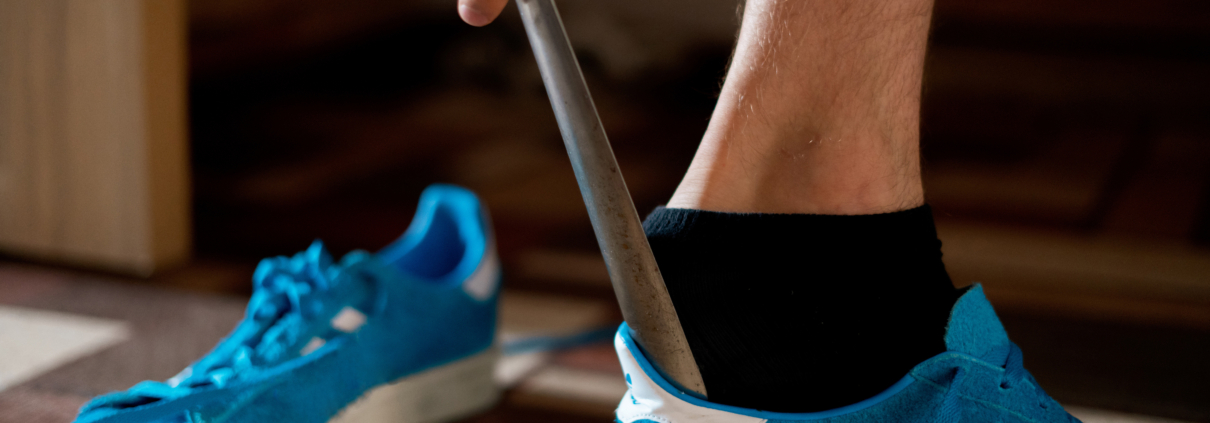OT Solutions: Adaptive Equipment
Adaptive Equipment (AE) are pieces of equipment to compensate for a physical limitation, promote safety, and promote independence. They are used to facilitate completion of daily activities such as dressing, feeding, bathing, grooming, and functional mobility. One may also hear the term “assistive device;” these terms are often used interchangeably.
Pieces of adaptive equipment include, but are not limited to:
- Dressing: long-handled shoehorn, sock aid, button hook and reacher
- Bathing: long-handled sponge
- Feeding: plate guards, cup adaptors, and built-up handles on utensils
- Home management: ergonomic knives and adapted cutting board with side rails and prongs to stabilize foods
- Additional pieces include: universal cuffs, doorknob extensions, and bed transfer devices.
Some patients may require the use of AE due to precautions put in place after an injury or surgery. For example, a sock aid, reacher, and long handled shoe horn are provided to individuals after a hip replacement to allow for increased independence with lower body dressing.
Pieces of AE are used in energy conservation and safety. For individuals with decreased balance, trunk stability, dizziness, or poor vision, a reacher is beneficial to eliminate the need to reach outside of their base of support to retrieve an item. Additionally, too much bending and reaching can cause fatigue and shortness of breath. Utilizing pieces of AE can eliminate the need to bend/reach, and therefore allow for energy conservation during dressing tasks.
Adaptive equipment may also be used in conjunction with mobility devices, such as adding platform crutches and/or enlarged grips on walkers to comply with a non-weightbearing status or prevent further stress on joints.
Occupational therapists will carefully assess performance and collaborate which pieces may likely benefit an individual’s participation in their daily tasks. It may take lots of practice, patience, and trial and error as an individual learns to use a piece of adaptive equipment.
Occupational therapists will educate patients on how to use equipment with strategies and techniques based off of an individual’s needs and learning style. An occupational therapist will also collaborate with a patient’s interprofessional team, families, and/or guardians to allow for best follow through for use of the equipment.
Maggie Webber, OTD, OTR/L is an Occupational Therapist in the Senior Living setting but has experience with clients of all ages, from pediatric to geriatric. Her area of expertise are in General Occupational Therapy, Cardiac Critical Care Unit, Neurology & Neurotrauma ICU, Trauma & Trauma ICU Colorectal Surgery, Infectious Diseases, Dementia, and Parkinson’s Disease. Maggie believes in building positive, lasting relationships with her patients to help them reach their goals.



